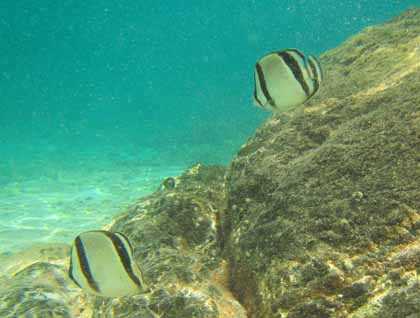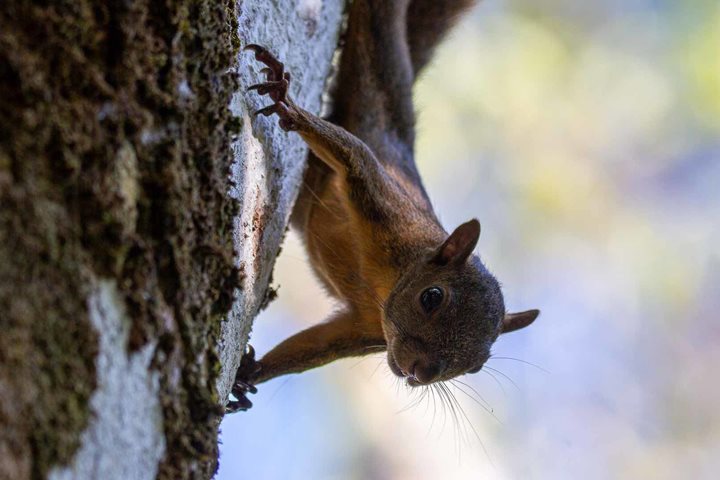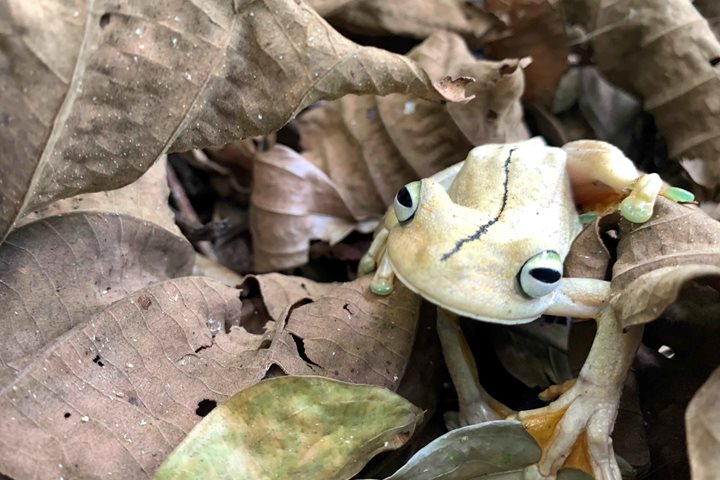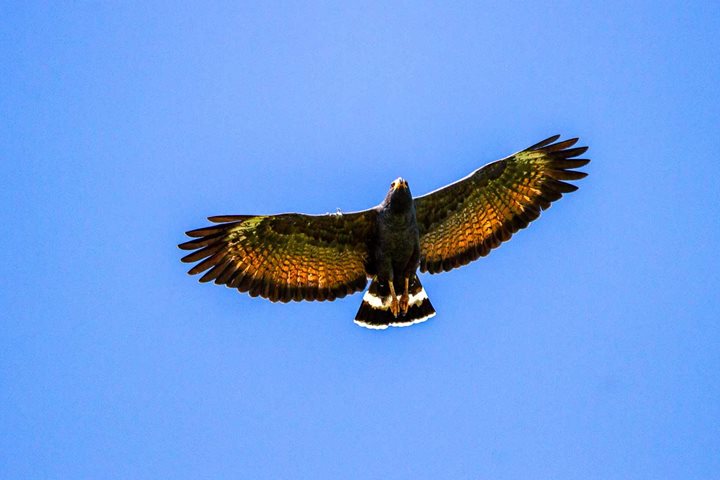After an incredibly quiet and calm 120 nautical miles of navigation from Costa Rican waters, National Geographic Sea Lion was caught by an orange-red sunrise over the horizon and hundreds of lush green islands and rocky islets. We had arrived at one of the most unique stops in our trip, Coiba Island. This national park comprises hundreds of little islands, islets and the second largest coral reef in the Eastern Pacific.
How has this idilllyc paradise been kept safe from five star hotels and mega constructions? Well, since 1914 it was the most feaerd penal colony in Panama, where the worst-of-the-worst were sent to pay for their crimes. The main island of Coiba is covered by tropical rain forest, ranging from sea-level mangroves to cloud forest in the mountains. There are monkeys, agoutis and deer among many other mammals, plus countless rainbow-colored birds.
But today was not about the terrestrail habitats as in past days; today was about the marine ecosystems. So after breakfast we conquered this little white sandy beach with three coconut palms and millions of hermit crabs, with our chairs, coolers, kayaks and snorkel gear. Granito de Oro is this “little nutget of gold,” named not after the precious metal but because its treasures are the coral and rocky reef around it.
There are countless numbers of fish, like the bicolored parrotfish with its powerful beak capable of munching rocks and corals, and the beautiful dark blue giant damselfish who guards its algae garden from the grazers of the reef like the surgeonfish or cortez chubs. The coral/rocky reef is more than just colorful fish, it is the everyday life of hundreds of organisms ranging from sharks to turtles, from sea urchins to rays, from sea anemones to coral polyps. If we all just took the time float and watch what goes on, we would be amazed and forever attached to this undersea world.







